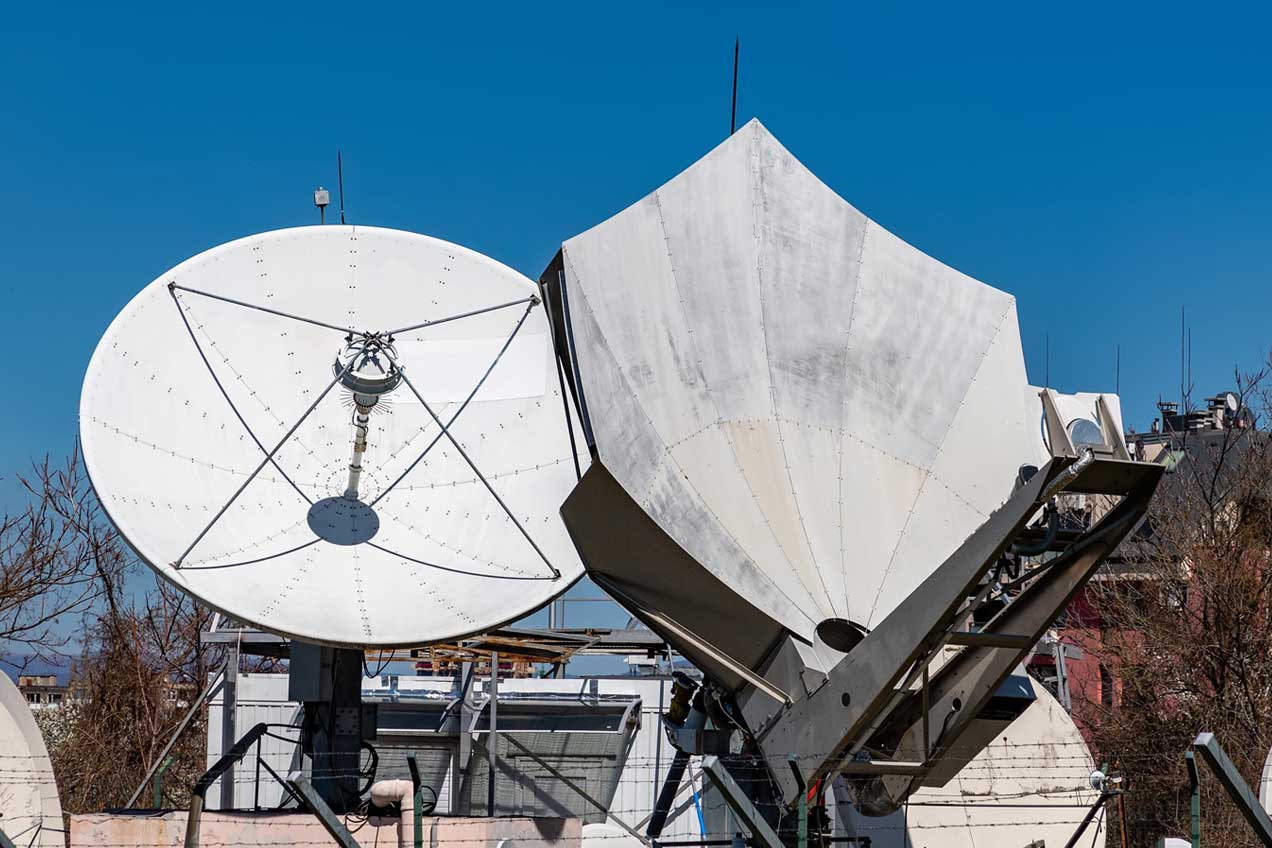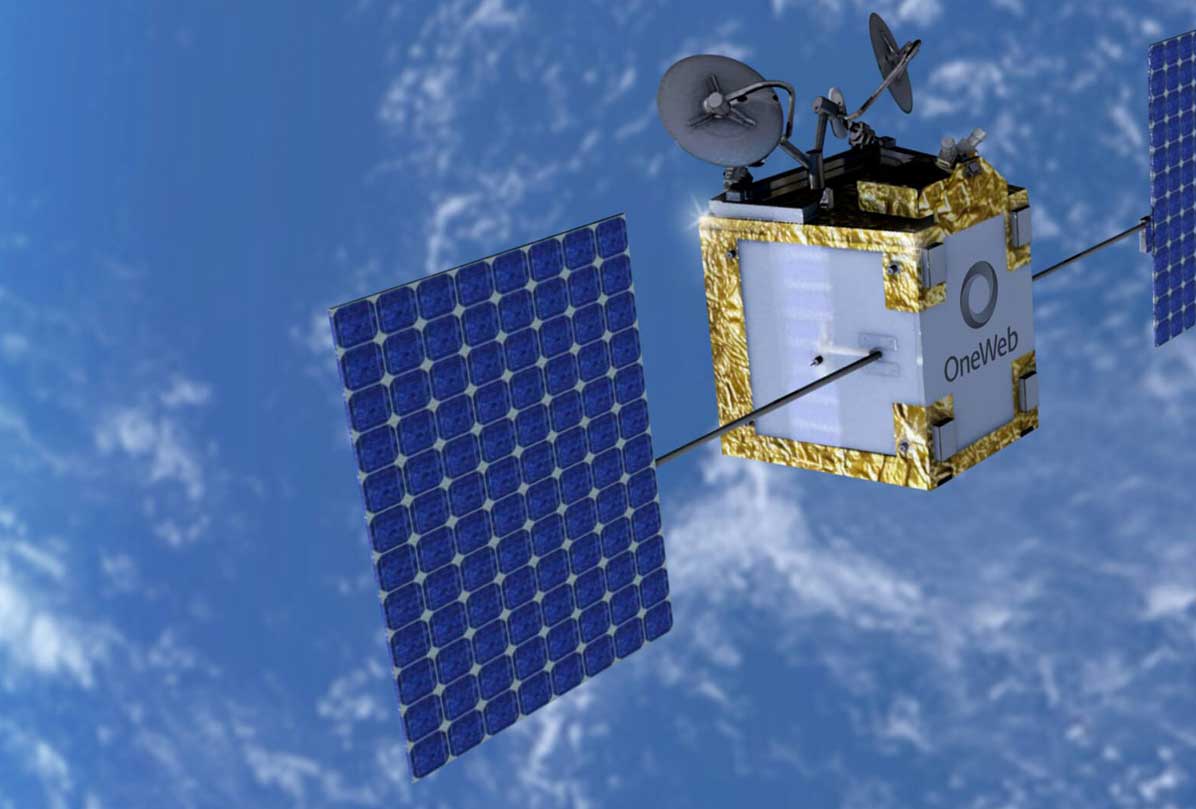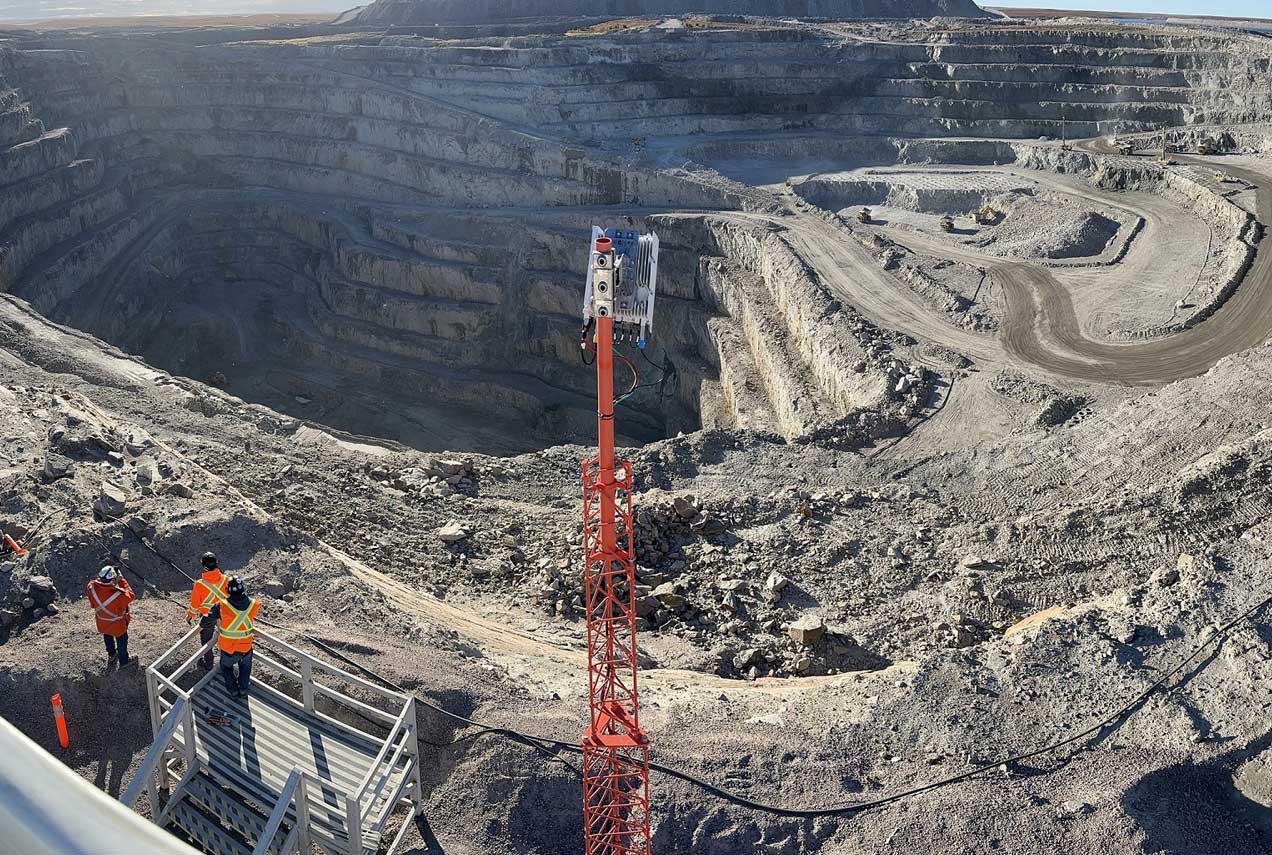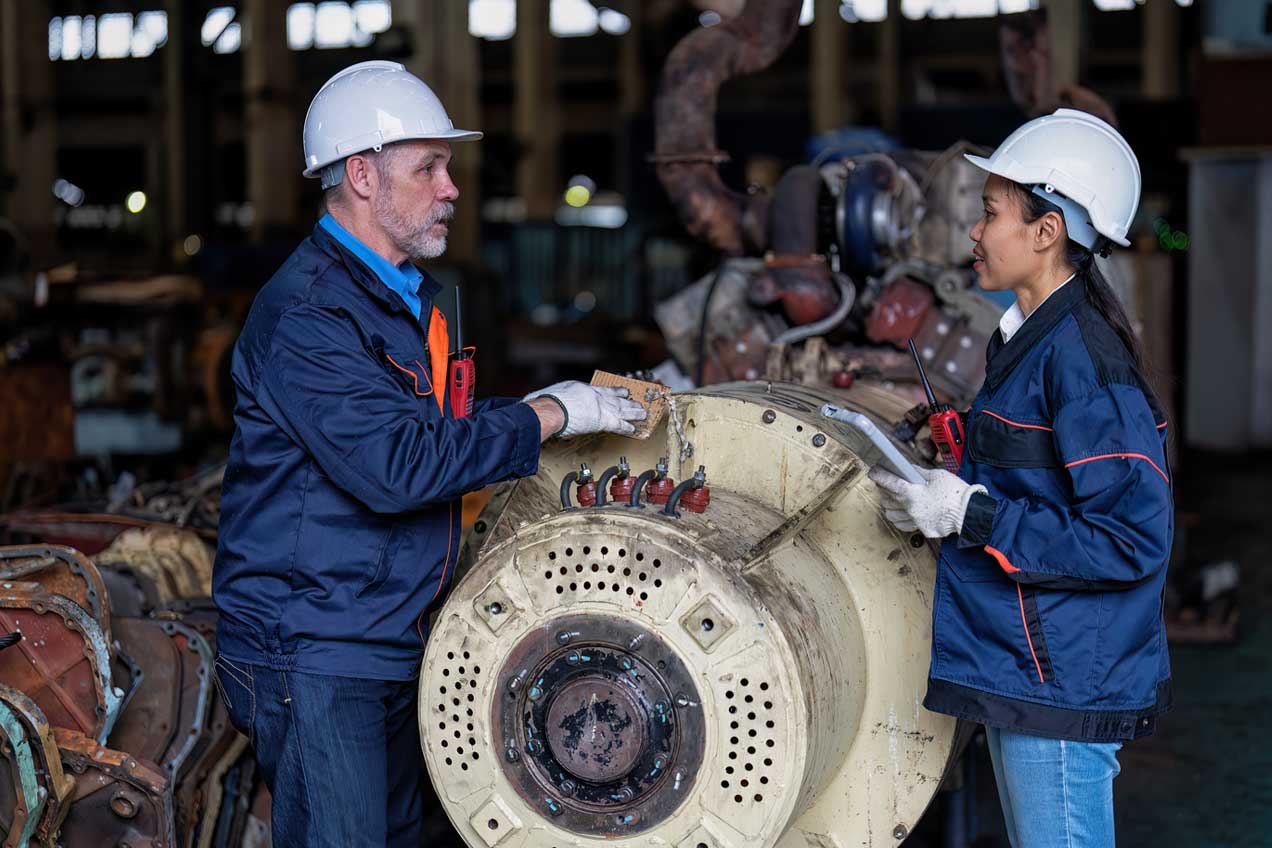Very Small Aperture Terminal (VSAT) technology is a critical element in modern telecommunications and is especially vital in industries like oil and gas, where operations are often remote or offshore.
VSAT systems consist of small, portable satellite antennas, typically 0.75 to 1.2 meters in diameter. They reliably establish satellite communication links, enabling the transmission and reception of data, voice, and video signals.
Key Takeaways
- The role of VSAT in providing stable and secure communication for remote and offshore sites is essential for operational safety and efficiency in the oil and gas industry.
- VSAT can handle real-time, large-volume data transmissions, aiding exploration and production processes.
- The significance of VSAT in ensuring the safety and well-being of crews in isolated areas.
- Challenges in implementing VSAT, particularly connectivity issues at sea, and the strategies to address these.
- Technical aspects and frequency bands of VSAT are crucial for optimal functionality.
- Case studies and applications from Canada and worldwide illustrate VSAT’s impact on offshore energy operations.
- Upcoming VSAT advancements include AI and IoT integration.
Benefits of VSAT in the Oil and Gas Industry
Reliable and Secure Communication
Traditional communication methods are often unreliable in remote oil fields and offshore platforms. VSAT fills this gap by providing stable and secure communication channels.
In the remote oil fields of Alberta, for instance, VSAT systems ensure that crews can maintain constant contact, which is crucial for both operational management and emergency responses.
Efficient Data Transmission
VSAT’s ability to handle large-scale, real-time data transmission significantly enhances operational efficiency.
In offshore drilling operations, for instance, VSAT enables the real-time transmission of seismic data and drilling metrics, aiding in quick decision-making and efficient resource management.
Crew Welfare and Safety
For crew members isolated in areas like the Northern Canadian oil sands, VSAT is vital for their well-being. It allows for regular communication with families and access to emergency services, providing a crucial link to the outside world and enhancing safety protocols.
Challenges in VSAT Implementation
Implementing VSAT in the oil and gas industry, especially maritime environments involves overcoming specific technical and environmental challenges.
Harsh Environmental Conditions
Installing VSAT systems presents unique challenges in oil and gas operations, especially in offshore locations. These environments often feature extreme weather conditions, such as high winds and rough seas, which can hinder the installation and maintenance of satellite communication equipment.
Remote and Inaccessible Locations
Many oil and gas sites are in remote areas or deep offshore locations. Transporting VSAT equipment to these sites requires careful planning and execution and cannot be delivered via traditional commercial carriers. The logistics involve navigating rough terrain or seas, which can be time-consuming and costly.
Technical Installation on Offshore Platforms
The installation of VSAT systems on offshore rigs or platforms is technically demanding. It requires precise alignment with satellites, which is challenging due to the platforms’ movement. Additionally, rig space constraints can make installing satellite dishes and related equipment difficult.
Applications of VSAT in the Oil and Gas Industry
Enhancing Rig On-Board Situational Awareness
VSAT facilitates real-time transmission of critical data from the rig to headquarters, enhancing situational awareness. This includes monitoring weather conditions, equipment status, and operational metrics, vital for safe and efficient operations.
Facilitating Real-Time Control and Faster Decision-Making
Through VSAT, operators can remotely control drilling operations and make timely decisions based on real-time data. This capability is essential in managing the complexities of oil and gas extraction, particularly in environments where on-site decision-making might be delayed due to communication lags.
Increasing Automation to Reduce Operating Costs
VSAT enables the integration of automated systems in remote operations, reducing the need for constant human intervention. Automating drilling, data collection, and equipment monitoring lowers operating costs and enhances efficiency.
Creating a Safer Working Environment
With VSAT, companies can implement advanced safety monitoring systems, ensuring real-time communication during emergencies. This improves overall safety by enabling quick response to potential hazards and effective coordination of rescue operations.
Improving Crew Welfare on Remote Sites
VSAT provides a critical communication link for crew members in remote locations, offering them access to VoIP, video conferencing, and entertainment. This connectivity is essential for maintaining morale and mental well-being, especially for crews stationed away from home for extended periods.
Exploring VSAT, LEO, and GEO in Satellite Communications
VSAT technology is integral to the oil and gas industry’s communication systems. It’s essential to understand how it works with different types of satellites, namely LEO (Low Earth Orbit) and GEO (Geostationary Earth Orbit). Each offers unique benefits and challenges.
VSAT and GEO Satellites
VSAT systems often use GEO satellites. These satellites are positioned far above the Earth, providing a wide coverage area. Their fixed position relative to the Earth simplifies the VSAT system’s setup. However, the distance from Earth introduces latency in communication, which can be a drawback for operations that require real-time data exchange.
The Role of LEO Satellites
LEO satellites, on the other hand, orbit much closer to Earth. This proximity significantly reduces communication latency, offering near real-time data transmission. They are ideal for operations that demand high-speed data transfer and large bandwidth. However, their rapid movement requires more complex tracking systems for the VSAT antennas through mechanically tracked parabolic dishes. This adds to the technical complexity and cost of using electronically steerable flat panel antennas, offering less efficiency but much simpler installations and maintenance.
Integrating VSAT with LEO and GEO
The choice between LEO and GEO for VSAT in the oil and gas industry isn’t about one being better. Instead, it’s about what each can offer for specific needs. Despite the latency issue, GEO’s wide coverage and more straightforward setup make it a reliable choice for broad communication needs. LEO is more suited for situations where speed and high data throughput are critical despite the increased complexity in tracking.
Future Trends in VSAT Technology for the Oil and Gas Industry
Upcoming trends in VSAT technology, particularly AI and IoT integration, will transform how the oil and gas industry manages data and operations.
AI-Driven Solutions
AI integration in VSAT systems is taking data handling in the oil and gas industry to another level. By analyzing satellite data, AI algorithms can predict equipment failures and optimize drilling operations. This includes forecasting maintenance needs to reduce downtime and prevent costly equipment failures.
AI’s role in seismic data analysis also enhances the accuracy of identifying potential drilling sites and optimizing exploration efforts.
IoT Integration
IoT integration with VSAT, like in Low Earth Orbit (LEO), creates a network of interconnected devices for real-time monitoring of oil and gas operations. Sensors on pipelines can transmit data on flow rates and potential leaks, enabling prompt responses to prevent disasters.
IoT devices monitor operational parameters and environmental conditions on drilling rigs, sending data to control rooms for analysis. Together with AI, this level of monitoring boosts operational efficiency and safety.

VSAT Installation Process Adopted by NTFS in the Oil and Gas Industry
NTFS follows a comprehensive process for installing VSAT (Very Small Aperture Terminal) systems in the oil and gas industry. This systematic approach ensures robust and reliable satellite communication, which is crucial for the safety and efficiency of operations in this sector. The process involves the following key steps:
- Site Assessment and Planning: NTFS begins with thoroughly assessing the installation site. This includes evaluating the geographical location, terrain, potential obstructions, and environmental conditions that might affect signal reception and equipment placement. The aim is to select an optimal location for the dish antenna and ground station to ensure the best possible connectivity.
- Equipment Selection: Selecting the appropriate VSAT equipment is critical. The equipment chosen is tailored to meet the specific demands of oil and gas operations, particularly in remote and challenging environments.
- Regulatory Compliance: The installation process adheres to all relevant regulations and licensing requirements for satellite communication. NTFS ensures compliance with local and international regulatory bodies, obtains necessary permits, and follows all safety standards.
- Infrastructure Preparation: NTFS prepares the necessary infrastructure for the VSAT system. This includes installing mounting structures for the dish antenna, setting up power supply systems, and creating climate-controlled enclosures to protect the equipment from harsh weather conditions.
- Cabling and Connectivity: The cabling required to connect the dish antenna, modem, and other network components is carefully laid out. NTFS ensures the cables are properly shielded and routed to prevent signal interference and physical damage.
- Equipment Installation: The dish antenna and ground station equipment are installed according to the manufacturer’s guidelines. NTFS calibrates the dish antenna for optimal alignment with the target satellite, maximizing signal strength and communication reliability.
- Additional Steps: NTFS also focuses on testing and optimizing the system, implementing robust security and cybersecurity measures, training personnel, and establishing a routine for continuous monitoring and maintenance.
Connect with NTFS for Expert VSAT Installation in Canada’s Oil and Gas Industry
NTFS provides professional and efficient VSAT installation in Canada’s oil and gas industry. Our specialized approach guarantees reliable communication tailored to this sector’s unique challenges. Visit our Satellite Internet Installation page to learn more about our services and how we can support your needs in Canada. You can also utilize our Pricing Calculator to estimate the installation cost. Rely on NTFS for your satellite communication solutions in Canada.






